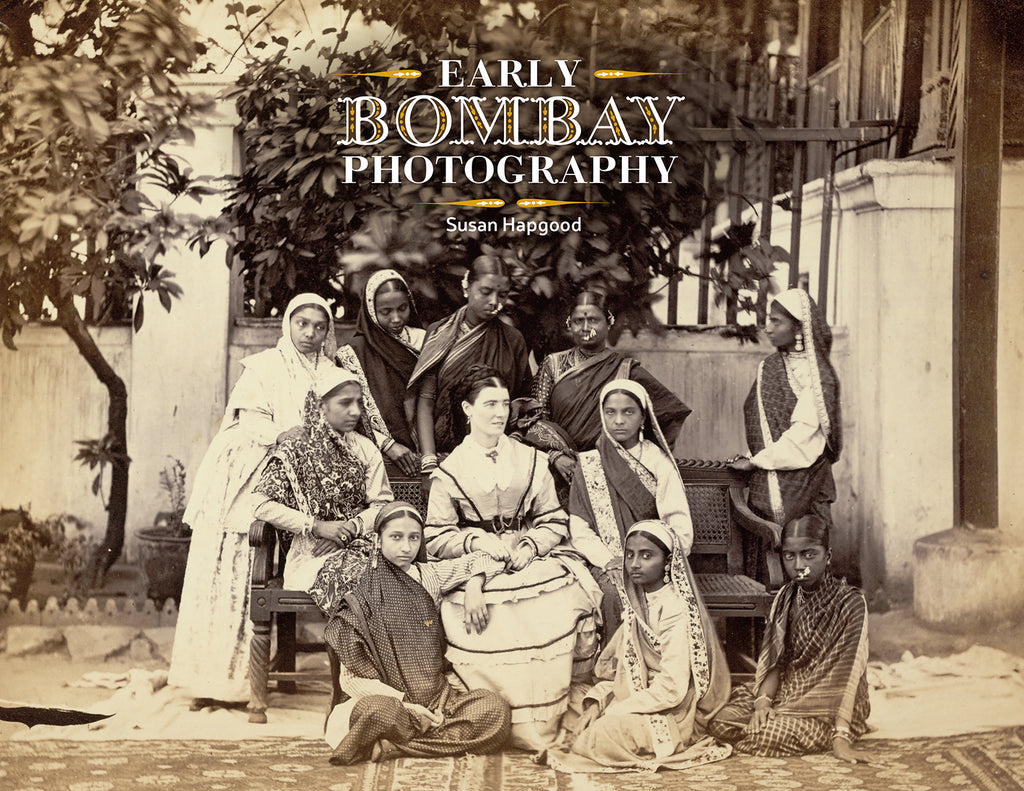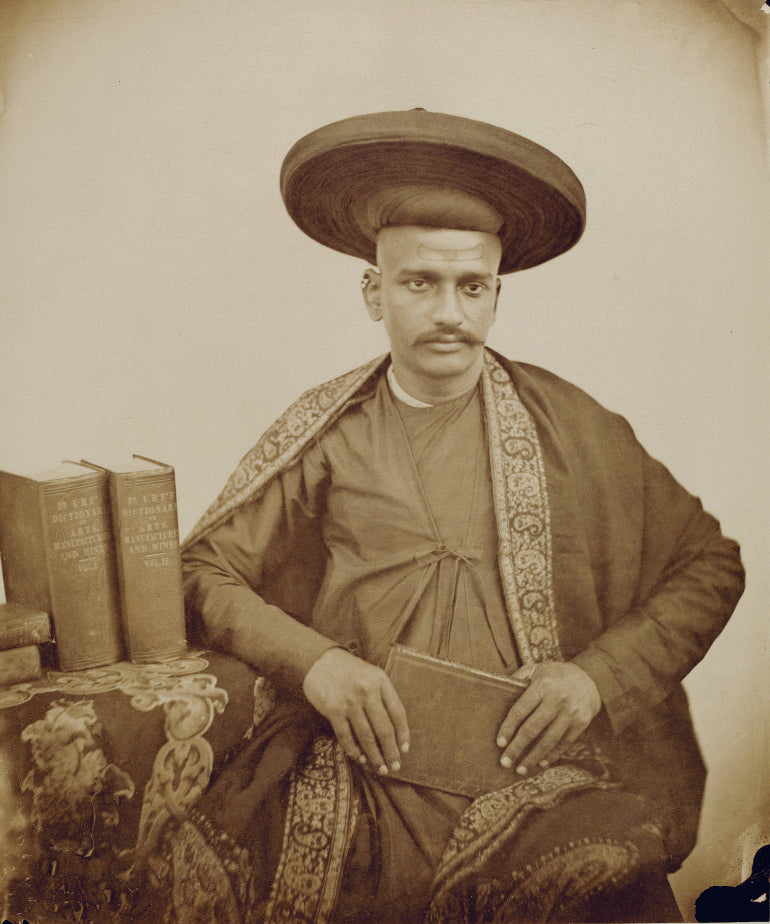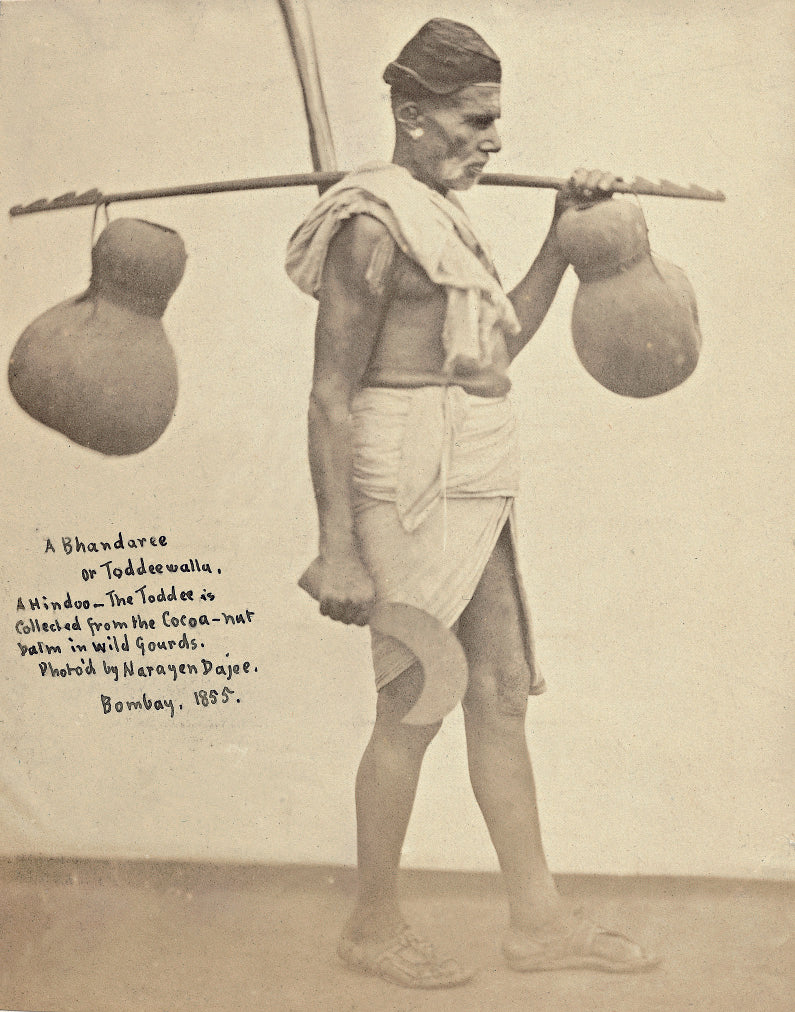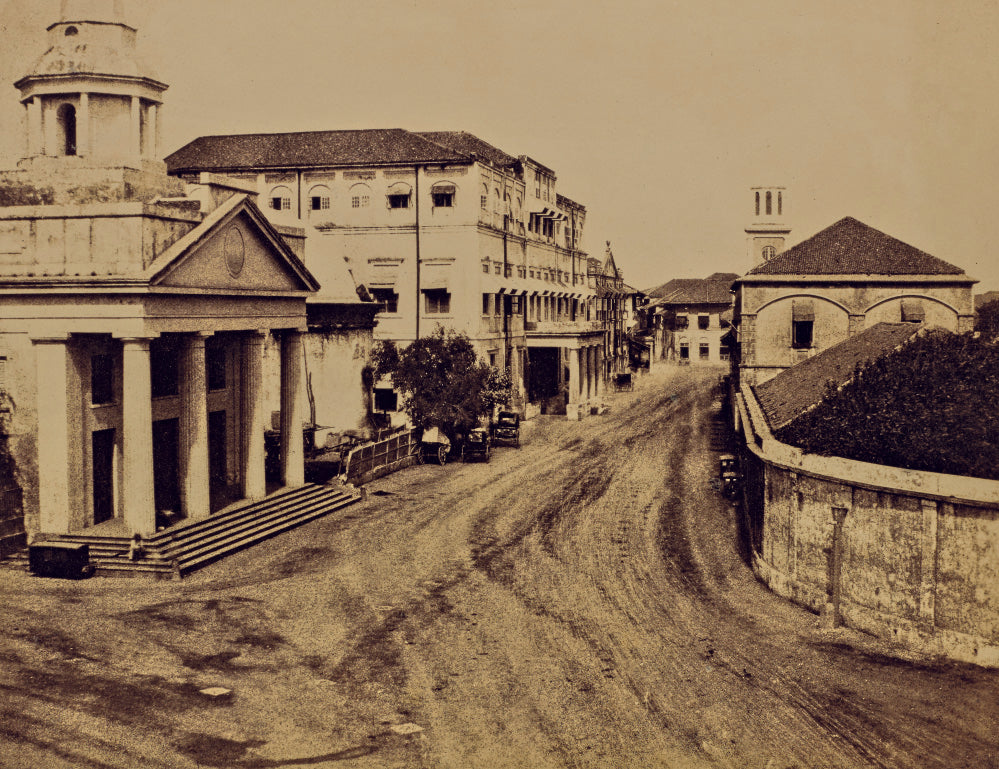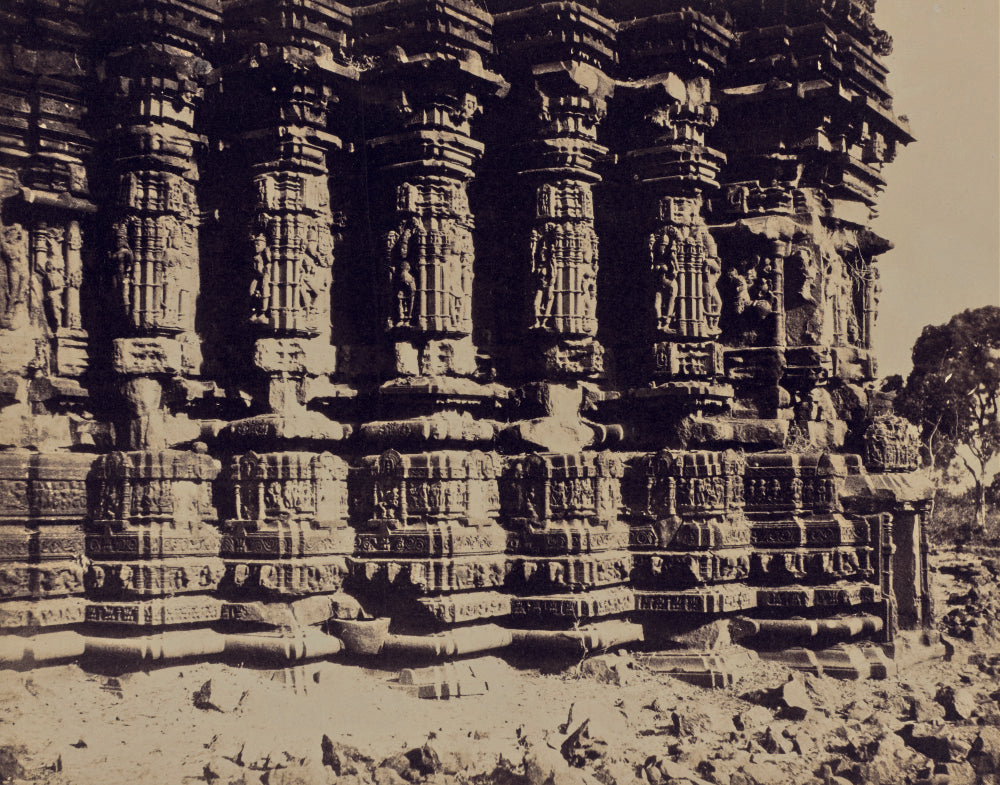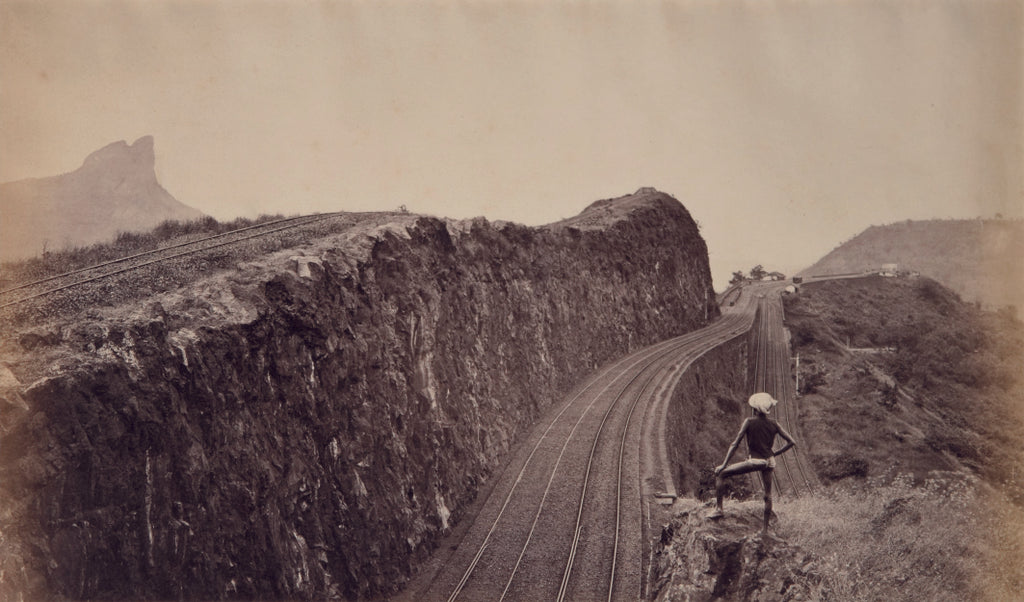Early Bombay Photography
Early photography flourished throughout India, with particular vigour in the city of Bombay (Mumbai).
- Category: All Books, MAPIN20, Photography
...provides keen insights into the port city’s fantastic experiments and relationship with photography in the 19th century. —Kareena Gianani in Sunday MidDay
Long before the introduction of moving pictures, and long before Bollywood, Bombay was the first Indian city where the photographic needs of the public—including more affluent indigenous Indians as well as British—were catered to. Bombay was the commercial heart of the country, and therefore more up to date with new technology and developments. Already by the 1850s, more Indians were practicing this new method in Bombay than anywhere else in the country, perhaps in Asia.
The aim of this publication in researching under-recognized photographers of the time like Narayan Daji, Hurrichund Chintamon, Shivshanker Narayen and Shapoor N. Bhedwar is to contribute new information for a local history that is still very much in formation. Following a roughly chronological trajectory, the volume looks at some of the earliest surviving Bombay photographs, and moves through differing eras to the end of the 19th century, covering architectural studies and landscapes, portraits and ethnographic studies, and the documentation of trade and technological advancements that produced such spectacular pictures.
Newly excavated data will augment the scholarship readily available on this period of photography, and on some of the best-known 19th century photographers active in Bombay: Thomas Biggs, William Henry Pigou, William Johnson, Colin
SUSAN HAPGOOD is an art historian and curator based in New York who lived in Mumbai from 2010–2014. She was the inaugural visiting professor of curatorial studies at Jawaharlal Nehru University, founding director of the Mumbai Art Room, and previously, director of exhibitions for Independent Curators International, New York. Hapgood received her initial professional training in New York at the Guggenheim Museum and the New Museum of Contemporary Art, and has curated exhibitions including A Fantastic Legacy: Early Bombay Photography, Energy Plus (at the 2012 Shanghai Biennale), Flux Attitudes, Neo-Dada: Redefining Art 1958–62, Slightly Unbalanced, and In Deed: Certificates of Authenticity in Art. The author of six books and numerous articles on modern and contemporary art, Hapgood received a Master of Arts degree in Art History from the Institute of Fine Arts, New York University.
• Introduction
• Photography Arrives
• Narayan Daji
• Early Publications, Ethnography, and Hurrichund Chintamon
• Agendas, Patronage and Clientele
• Architecture, Archaeology and Topographical Views
• Industry, Trade, Transportation and Commissions
• In the Artistic Context: Shapoor N. Bhedwar and Pictorialism
• Expanding Histories
• Endnotes
| ISBN | 9788189995928 |
| Pages | 144 |
| Number of photographs | 95 |
| Size | 11 x 8.5 (279 x 216 mm), sc with gatefold |
| Date of Publishing | 2015 |
| Language(s) | English |
| Co-publisher(s) | Mapin in association with Contemporary Arts Trust, Mumbai |
| Rights Available | World rights |





